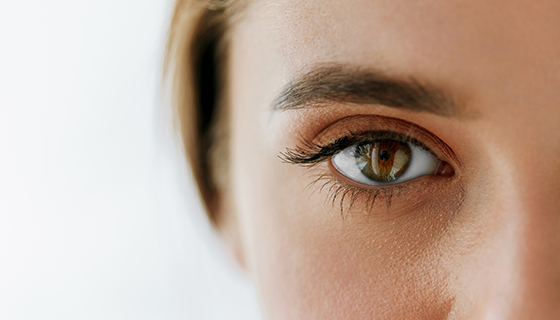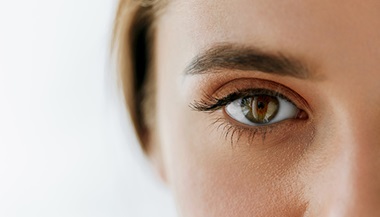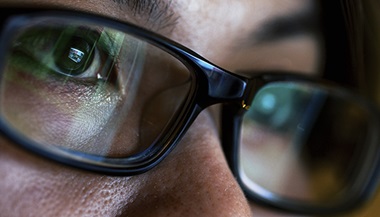Scleral Buckling
What is scleral buckling?
Scleral buckling is a type of eye surgery to correct a detached retina and restore vision.
The retina is a layer of cells at the back of your eye. These cells use light to send visual information to your brain. Retinal detachment happens when part of your retina detaches from the rest of your retina and eye. When that happens, your retina does not function normally, and vision is lost in all or part of your retina. If not treated promptly, this can cause permanent vision loss.
Your surgeon may perform scleral buckling under local or general anesthesia. During scleral buckling, your eye surgeon will expose your eyeball. He or she may use a freezing instrument to help seal your retina back together. After that, your surgeon may use a small device, a scleral buckle, to hold your retina in place.
Why might I need scleral buckling?
Certain factors make it more likely that you will have a retinal detachment. These include:
- Nearsightedness
- Other eye disorders, like uveitis
- Previous cataract surgery
- Increased age
- Diabetes
Most of the time, the retinal detachment happens spontaneously, but sometimes trauma to the eye can cause it as well.
If you have retinal detachment, you will probably need some sort of procedure or surgery. You might have an increase of floaters in your eye. These look like little specks or cobwebs that float in your field of vision. These floaters can be so dense that they impair your vision. You might also experience light flashes in your eye or a curtain over your field of vision.
If you have these symptoms, you may need an emergency surgery or procedure to reattach the retina. This can restore vision.
Eye care providers sometimes treat retinal detachment with a less invasive procedure called pneumatic retinopexy. This procedure cannot treat all types of tears to your retina. However, if you have a complicated retinal tear, you may also need another surgery called a vitrectomy. All of these techniques can successfully repair a detached retina. Ask your eye care professional about the benefits and risks of all your treatment choices.
What are the risks of scleral buckling?
Most people do well with their scleral buckling surgery, but complications do sometimes happen. Your risks may depend on your age, your medical conditions, and the specifics of your retinal detachment. Risks of the procedure include:
- Proliferative vitreoretinopathy
- Detachment of the eye layer beneath your retina
- Hemorrhage in your eye
- Retinal incarceration
- Infection
- Increased nearsightedness
- Cataracts
- Increased pressure in your eye
- Double vision
- New retinal tears
There is also a risk that a retinal detachment will come back and that you will need another surgery.
How do I prepare for scleral buckling?
Ask your eye care provider what you need to do to prepare for scleral buckling surgery. Ask whether you need to stop taking any medicines before the procedure. You will need to avoid eating anything after midnight the day before surgery.
Your eye care provider may want to use special instruments to shine a light in your eye and examine your retina. You may need to have your eyes dilated for your eye exam. You also might have an ultrasound of your eye, which helps your eye care provider view the retinal detachment.
What happens during scleral buckling?
Talk with your eye surgeon about what to expect during your surgery. The details may vary somewhat. You will probably have scleral buckling done in an operating room at the hospital. In general, during the procedure:
- You may receive sleep medicine (anesthesia) to put you to sleep. If this is the case, you will sleep deeply through the surgery and will not remember it afterwards.
- In other cases, you may be awake during the surgery. You will receive a medicine to help you relax. In this case, your eye care provider may use eye drops and injections to make sure you do not feel anything.
- Your eye care provider may give you eye drops to dilate your eye.
- Your surgeon will expose your eye, making an incision in the outer layer of your eye.
- Your surgeon will use an ophthalmoscope to view your retina.
- Your surgeon may use a device to seal your retina back together. Most commonly, your surgeon will do this with a freezing device that "seals" the retina to the inner wall of the eye.
- Your surgeon will place a very small band or buckle around the outside of your eyeball. This helps to make sure that your retina stays in place.
- Some fluid may be drained from beneath your retina.
- An antibiotic ointment may be applied to your eye to help prevent infection.
- You will receive a patch to cover up your eye.
What happens after scleral buckling?
Ask your eye care provider about what you should expect after your surgery. In most cases, you will be able to go home the same day. Plan to have someone drive you home from the procedure.
Be sure to follow your healthcare provider’s instructions about eye care. You may need to take eye drops with antibiotics to help prevent infection. Your eye may be a little sore after the procedure, but you should be able to take over-the-counter pain medicines. You may need to wear an eye patch for a day or so.
You will need close follow-up care with your surgeon to see whether the procedure was effective. You may have a scheduled appointment the day after the procedure. Be sure to tell your surgeon right away if you have decreasing vision, or increasing pain, or swelling around your eye. If the procedure does not work, you may need to have additional surgery.
Next steps
Before you agree to the test or the procedure make sure you know:
- The name of the test or procedure
- The reason you are having the test or procedure
- What results to expect and what they mean
- The risks and benefits of the test or procedure
- What the possible side effects or complications are
- When and where you are to have the test or procedure
- Who will do the test or procedure and what that person’s qualifications are
- What would happen if you did not have the test or procedure
- Any alternative tests or procedures to think about
- When and how will you get the results
- Who to call after the test or procedure if you have questions or problems
- How much will you have to pay for the test or procedure






